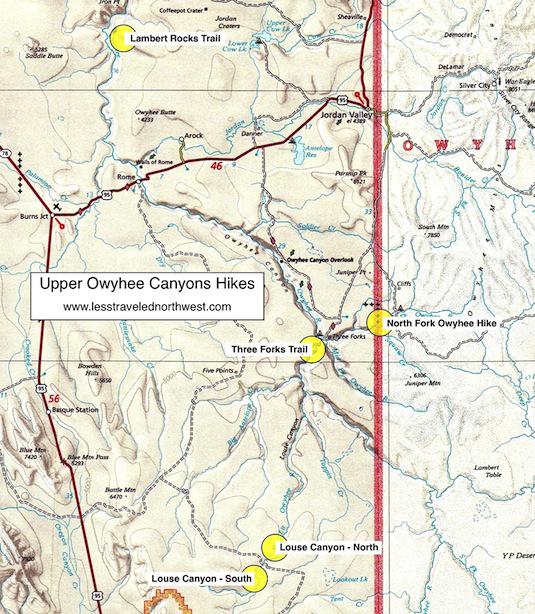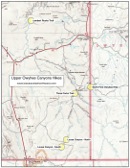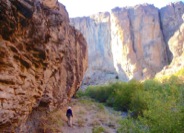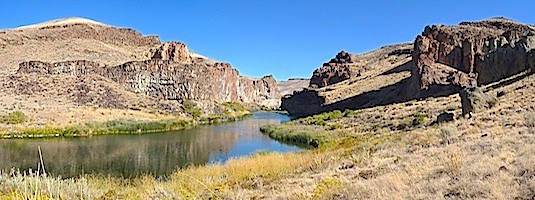Less Traveled Northwest
Day Hikes for the Adventurous
Upper Owyhee Canyons Hikes
The Upper Owyhee Canyons are arguably Oregon’s most remote and least-traveled hiking destinations. This isolated corner of southeast Oregon has been aptly called “the outback of the Outback,” or simply “the Big Quiet.” The river canyons themselves are wild and untouched, offering some of the most dramatic and scenic day hikes in the Inland Northwest. However, access to these canyons is limited to just a few backcountry roads, so driving distances between the day hikes are lengthy. In short, the hiking destinations are wild and spectacular, but each involves delayed gratification, as travelers will spend hours driving through the dry desert to reach the remote trailheads.
The Owyhee Plateau is a broad, flat expanse of dry, mostly treeless, desert sagelands, averaging about 4,500’ in elevation and incised by various forks of the Owyhee River. The plateau geology is a sandwich of older yellowish ash deposits, then layers of white and brown volcanic tuffs, overtopped by more recent, dark basalt flows. These colorful layers are exposed at various points in the steep walls of the branching river canyons. On the mainstem Owyhee River, originating in the mountains of southwest Idaho and northern Nevada, the colorful canyon walls are over 1,000’ high. The smaller tributary canyons, fed by springs and runoff from the plateau itself, are narrower and more intimate, with canyon walls averaging 300‘ to 500‘ high.
Download (PDF, 506 KB): Location Map of Owyhee Canyons Hikes
Download (PDF, 581 KB): Photos of Upper Owyhee Canyons
As the hikes are widely-dispersed, it’s best to think ahead about a travel plan. If tent camping, one could stay at or near most of the remote trailheads, supplying one’s own water and sanitation. If camping with a tent trailer or small travel trailer, there are a few developed campgrounds in the area, all of which provide vault toilets, but rarely drinking water. A third option is to find a dispersed campsite out in the sagebrush, within an hour’s drive of one or two of these day hikes, and then “commute” to the trailheads.
Since most of these hikes involve walking in the canyon bottoms themselves, with frequent river fords, it’s best to plan these hikes for September, when the river flows are low and temperatures are more moderate. Gas and limited supplies are available at the store in Rome, with more extensive services in the larger community of Jordan Valley.
Two of our day hikes explore the mainstem Owyhee River. The Lambert Rocks Trail descends almost 1,000’ from the canyon rim, through a fascinating lava field, to a scenic destination at the main river’s edge. The Three Forks Trail starts along the main river and winds for more than two miles along an old military road, through a cathedral canyon, to warm spring pools at hike’s end. The North Fork Owyhee River hike starts with a steep, challenging descent down through the rimrock and then explores the river canyon below for over a mile. The two Louse Canyon hikes start at the same trailhead, Anderson Crossing, but then follow the spectacular, winding rock gorges of the West Little Owyhee River in two different directions, one north and one south.
> Lambert Rocks Trail
> North Fork Owhyee River Hike
> Three Forks Trail
> Louse Canyon - North Hike
> Louse Canyon - South Hike
NOTE: We have purposely excluded hikes in the Lower Owyhee River region — in the Leslie Gulch, Succor Creek and Honeycombs areas — as these are all within an hour’s drive of Boise, Idaho and already receive plenty of attention and recreational pressure.
Clickable map of Upper Owyhee Canyons hikes:

Page last updated: 1/15/13



